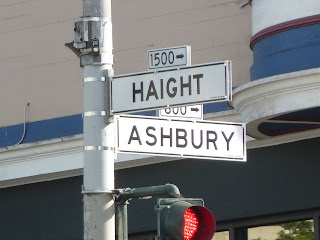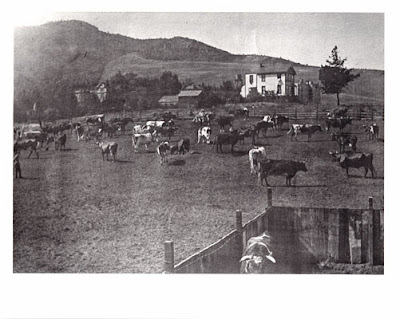[My SF Past] Haight Ashbury Tour
5 просмотров
Перейти к первому непрочитанному сообщению
Gloria Lenhart
23 июл. 2012 г., 17:28:4623.07.2012
– san-francisco-adv...@googlegroups.com

- Visit the sites of the Summer of Love.
- See amazing examples of Victorian architecture
- After the tour , explore Haight Street's vintage clothing stores, trendy restaurants and more.
Called the Outside Lands on early maps, the area was considered uninhabitable. As late as the 1860s, it was still mostly blowing sand hills dotted with a few struggling farms. Not until the 1880s when cable car lines were extended down Haight St. to the newly opened Golden Gate Park did development begin. Weekend hotels sprung up near the Park, many of which are now apartment houses or bed and breakfast inns. Row after row of elaborately decorated Queen Anne style houses were built, with rounded turrets, decorative shingles and stained glass. Still many thought it was just too far away from downtown.
 |
Lange’s Dairy Farm in the Haight
circa 1892. This farmhouse was later
moved to Piedmont Street,
where it stands today.
Photo Credit: San
Francisco Public Library AAB – 8800
|
The
Haight was survived the 1906 Earthquake and Fire almost untouched, and people burned out of other parts of the city
sought refuge here. Tents appeared in the Panhandle and large homes were
turned into boarding houses. The Haight became a largely Irish working class
neighborhood. Apartment buildings were
added in the 1940s to accommodate the new families of the soldiers returning
from World War II. As these families began
to exit to the suburbs in the 1950s, some areas of the Haight began to grow
shabby and rents dropped.
Elaborate Queen
Anne Victorians can be seen throughout the Haight,
like this Waller Street row with plaster designs representing the four seasons. |
In
the 1960s, musicians, poets and other artists began to move in. SF Chronicle
columnist Herb Caen, who had previously invented the term Beatniks (see North
Beach), called these new artists “Hipsters.” Fueled by opposition to the
Vietnam war, the Hippie movement took hold.
The Hippies advocated a free lifestyle – free
thinking, free food, free love. The 1967 Summer of Love drew thousands of young
people from all over the country. They
camped in the Panhandle or “crashed” somewhere in a large Victorian house. A group that called themselves the Diggers distributed
free food, taking their name from a 17th century English protest
group who took over public land to grow food for the poor. There was spontaneous street theater and free
concerts by musicians who became rock
legends. A young medical student opened
the Haight Ashbury Free Clinic, which still provides low cost medical services
in the Haight and other neighborhoods today.
Although
the Age of Aquarius had passed, many ideas championed by the Hippies are still
relevant -- conservation,
self-sufficiency, organic foods, recycling, diversity and tolerance. Walk with
us and you’ll find that the Haight is still an exciting, vibrant neighborhood
that continues to attract interesting people and ideas.
--
Posted By Gloria Lenhart to My SF Past at 11/08/2011 01:55:00 PM
Ответить всем
Отправить сообщение автору
Переслать
0 новых сообщений
